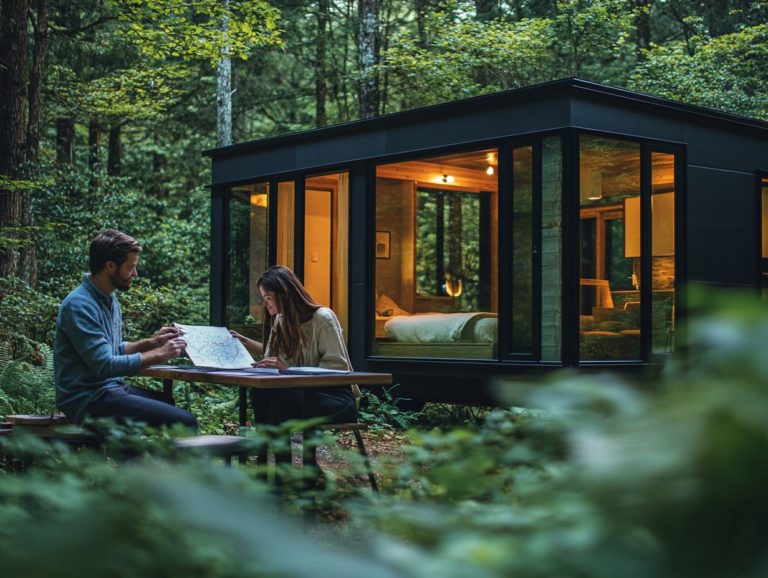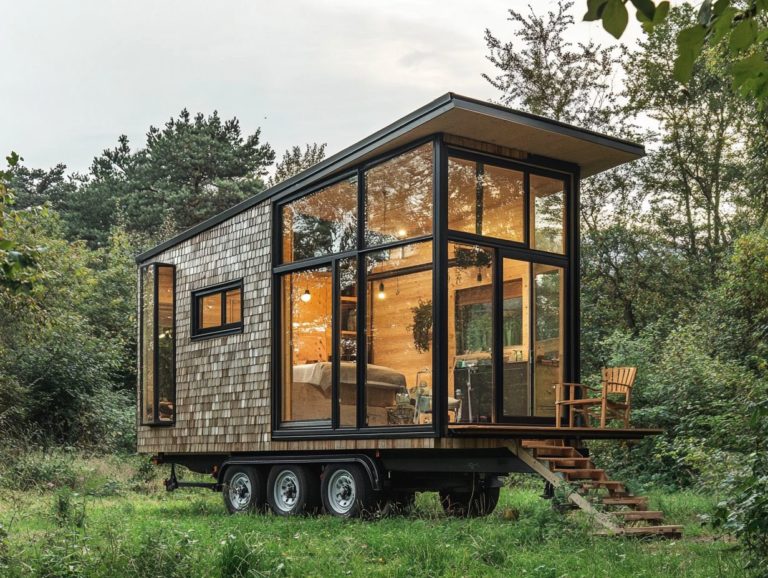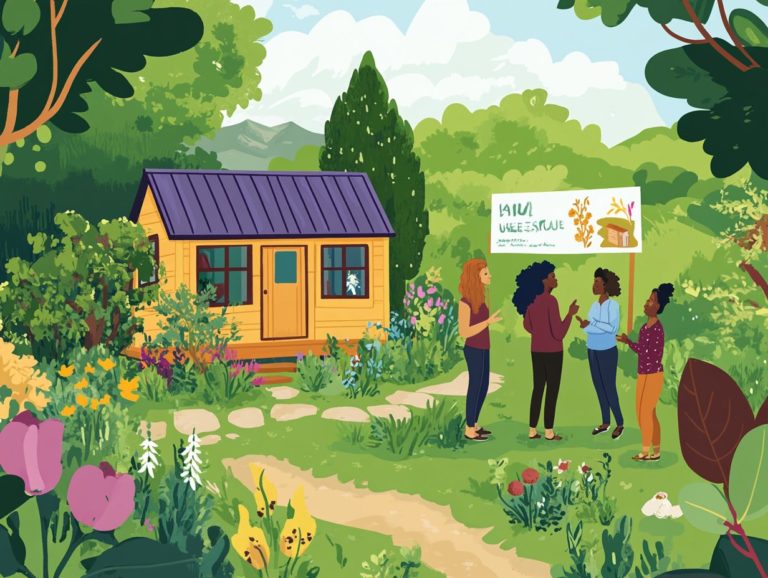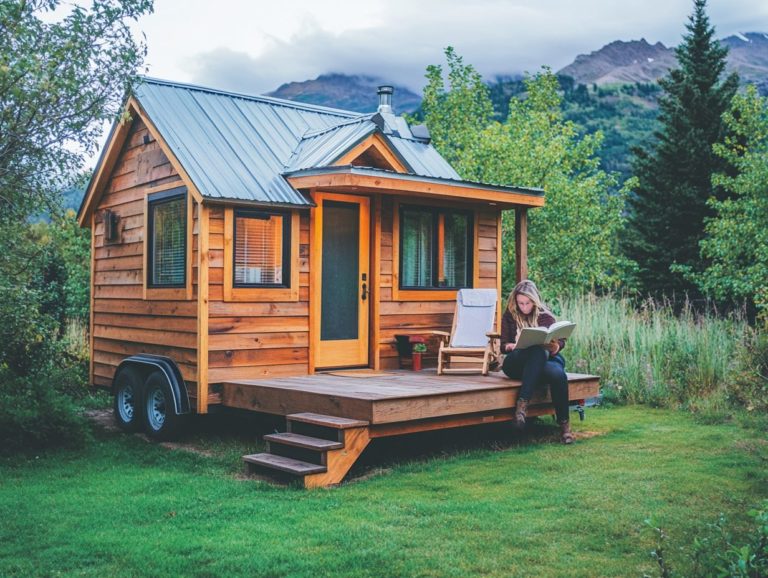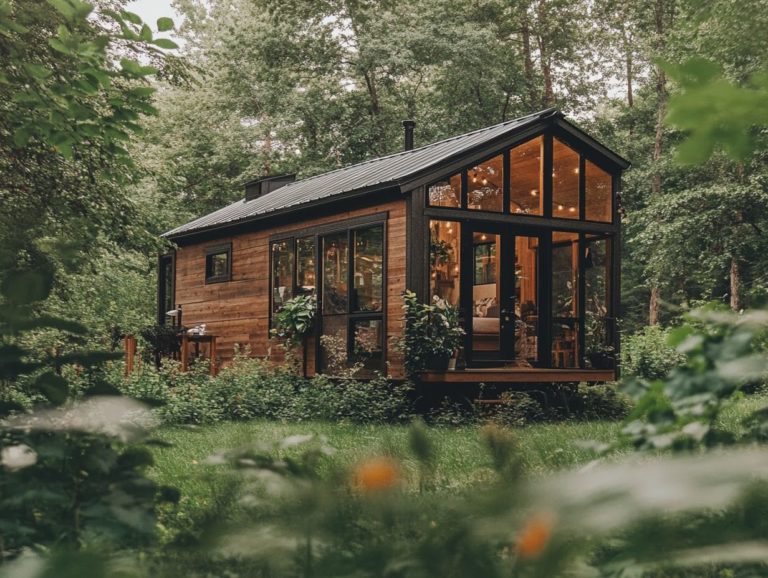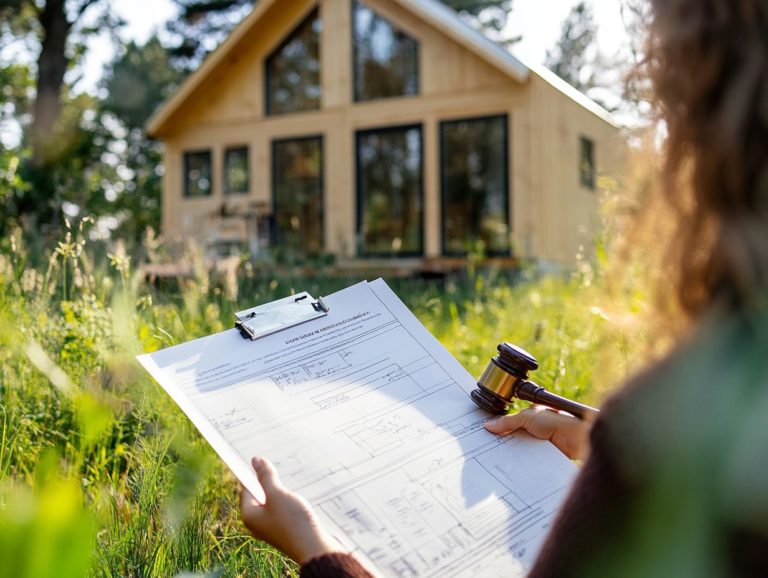Tiny House Community Regulations: What to Expect
Tiny house communities are increasingly capturing attention as individuals seek sustainable living options and a genuine sense of belonging.
This article delves into the essence of these communities, showcasing the myriad benefits of shared living think robust support networks and significant cost savings. It also touches on crucial elements such as regulations and zoning laws that can significantly influence your experience.
Whether you’re contemplating the idea of joining a tiny house community or simply harboring curiosity about this lifestyle, this guide provides valuable insights to help you navigate this distinctive way of living.
Contents [hide]
- Key Takeaways:
- Understanding Tiny House Communities
- Benefits of Living in a Tiny House Community
- Regulations and Zoning Laws for Tiny House Communities
- Finding and Joining a Tiny House Community
- Living in a Tiny House Community: What to Expect
- Frequently Asked Questions
- What are the typical regulations for tiny house communities?
- Do I need a permit to build a tiny house in a community?
- Can I park my tiny house on any piece of land in a community?
- Are there any restrictions on the materials I can use to build my tiny house?
- Are there rules on the number of people living in a tiny house community?
- What utility regulations apply to tiny houses?
Key Takeaways:
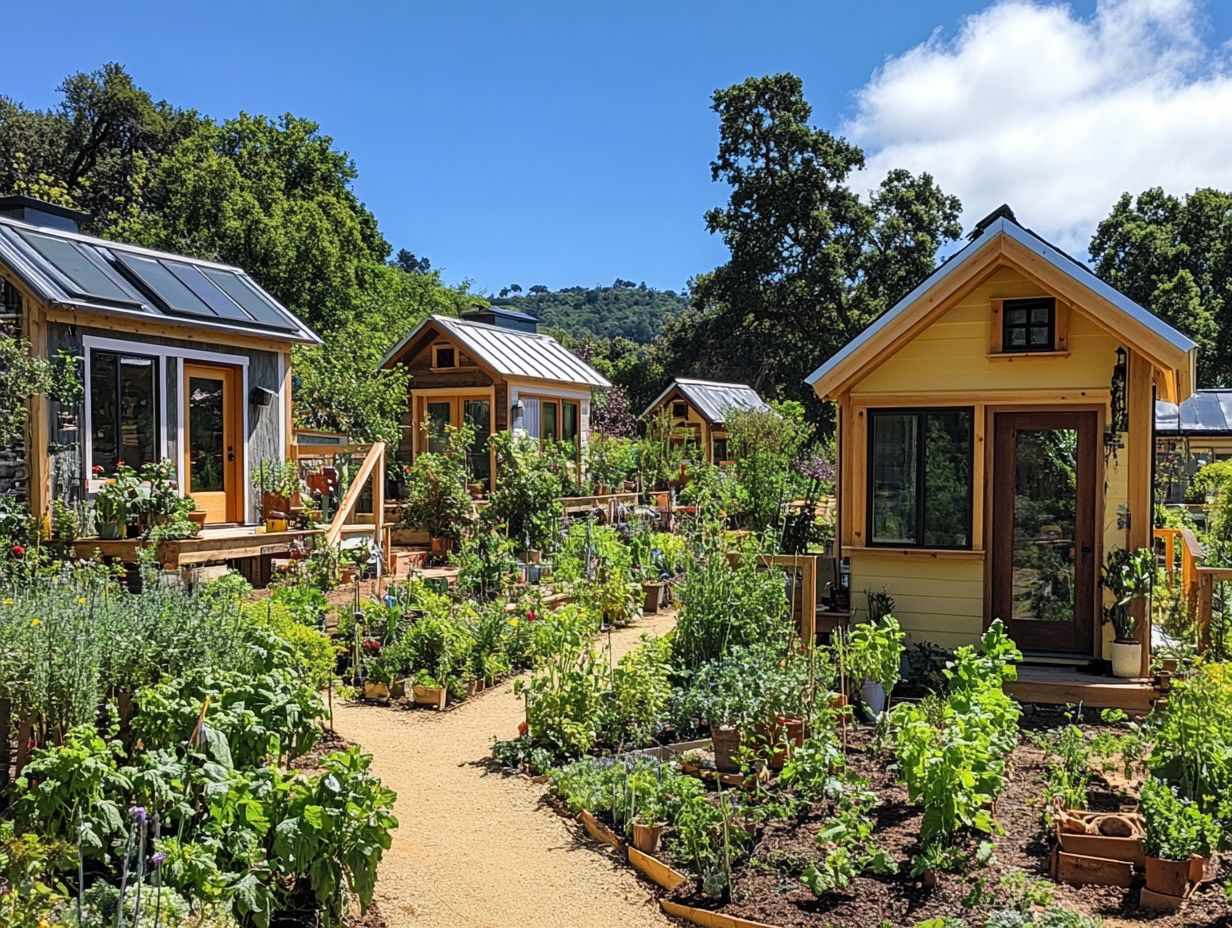
- Living in a tiny house community can provide cost savings and a strong sense of community support.
- Regulations and zoning laws for tiny house communities can vary greatly, leading to challenges and controversies.
- When searching for a tiny house community, consider location, community rules, and dynamics for a successful living experience.
Understanding Tiny House Communities
To truly grasp the essence of tiny house communities, one must appreciate the Tiny House Movement. This movement champions the art of minimalist living, promoting small, efficient dwellings that qualify as tiny houses whether they re mobile on wheels or anchored to a foundation.
These communities are emerging across diverse locations, from Alabama to California, presenting distinctive living arrangements for those eager to downsize or simplify their lives. They emphasize sustainability, affordability, and a profound sense of belonging, making them a compelling choice for many individuals and families seeking a fresh perspective on living. For those considering this lifestyle, understanding the legalities of tiny house construction is essential.
What are Tiny House Communities?
Tiny house communities represent a unique approach to living. Here, you and your family can reside in compact homes designed for maximum efficiency and sustainability.
In these innovative neighborhoods, you’ll discover shared amenities that foster a sense of camaraderie and connection something that often feels absent in traditional residential areas. With smart land use, these communities frequently include extra small homes on the same property, providing extra living spaces for guests or rental opportunities, making them both versatile and economically attractive.
Unlike standard suburban developments, tiny house communities encourage a minimalist lifestyle, inviting you to downsize your possessions and embrace a richer sense of community living. If you’re curious about this simple yet fulfilling way of life, tiny house hotels offer you a chance to experience it firsthand, seamlessly bridging the gap between rural tranquility and urban convenience. It’s also important to be aware of tiny house HOA rules to ensure a smooth transition into this lifestyle.
Benefits of Living in a Tiny House Community
Living in a tiny house community offers incredible advantages that can transform your lifestyle! Chief among them is significant savings on housing costs and property taxes. This choice is perfect for anyone looking to save money.
These communities also create a nurturing atmosphere where residents can share resources, skills, and experiences, fostering a deep sense of camaraderie and belonging among all members.
Community Support and Cost Savings
Community support within a tiny house community can profoundly elevate your living experience. It offers shared resources and emotional backing while also paving the way for cost savings through collaborative arrangements.
In these dynamic communities, you’ll find that members frequently share amenities like kitchens, gardens, and recreational areas, which cultivates a spirit of teamwork and collaboration. Mutual aid is essential, as neighbors often band together to tackle tasks such as maintenance, collective gardening, or organizing events that further strengthen their connections.
For example, consider a tiny house village in Oregon, where residents enjoy not only reduced utility bills but also the opportunity to share skills from woodworking to cooking classes that enhance their quality of life. This collective commitment not only eases financial pressures but also fosters a nurturing environment, making tiny living an appealing and enriching choice for many. However, it’s crucial to be aware of understanding tiny house land use laws to ensure compliance and secure a sustainable lifestyle.
Regulations and Zoning Laws for Tiny House Communities
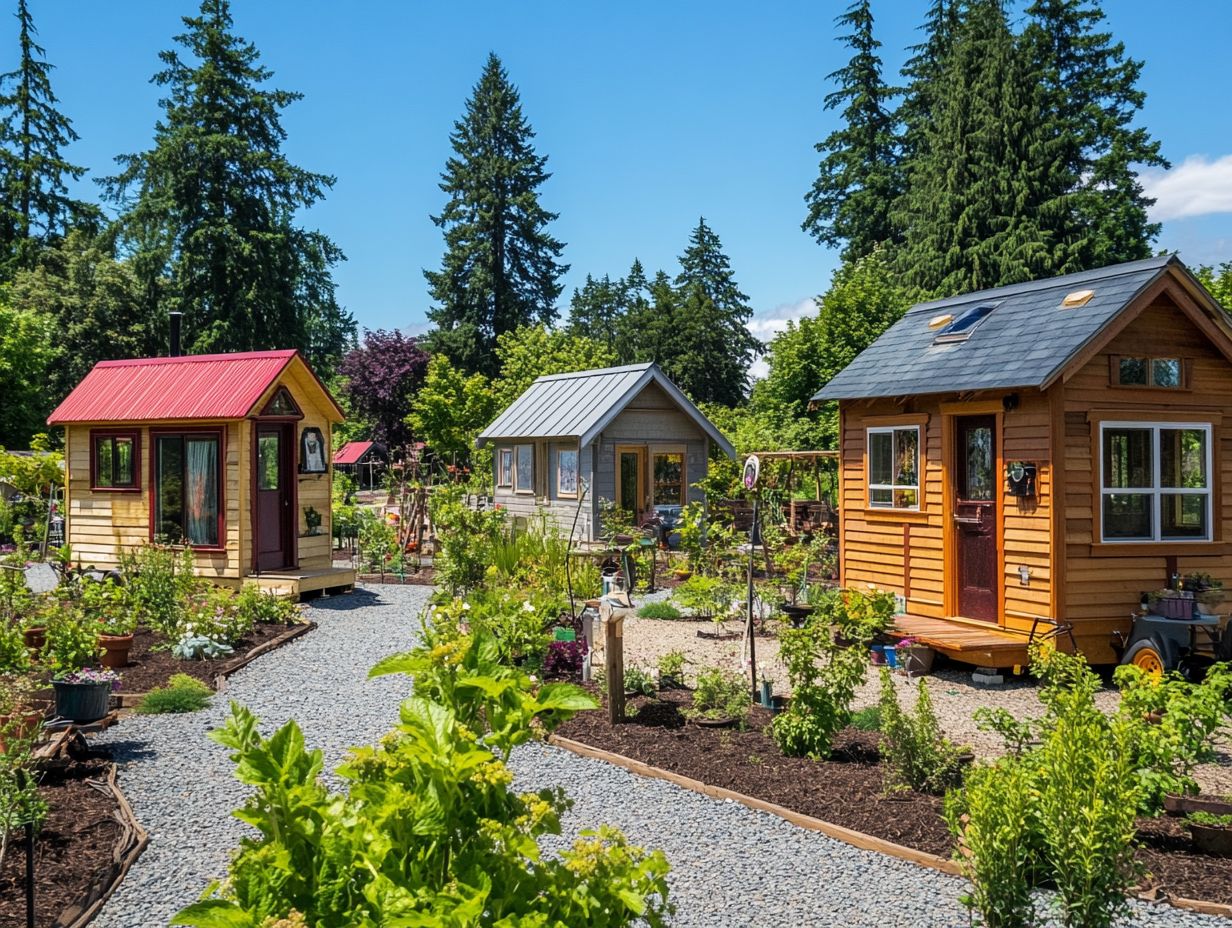
Grasping the regulations and zoning laws that govern tiny house communities is essential for anyone considering a move or construction in this area. These legal frameworks dictate a wide array of factors, from building codes to land use. This ensures safety and compliance with local requirements.
You may encounter significant variations in these regulations depending on the region. Local zoning departments often oversee compliance with standards such as the International Building Code and the International Residential Code. For those interested in tiny homes, understanding tiny house occupancy permits and these nuances empowers you to navigate the process with confidence.
Overview of Regulations
An overview of regulations for tiny house communities uncovers essential requirements you must adhere to. These include minimum ceiling heights, plumbing specifications, and the establishment of emergency exit points to ensure safety and compliance.
These regulations vary widely based on local zoning laws and building codes. They often dictate how your tiny house should be constructed and maintained. For example, if you find yourself in an urban environment, you may encounter stricter guidelines related to setbacks and foundation types. In contrast, rural areas might offer more lenient standards. Understanding tiny house living and the importance of zoning can help navigate these regulations.
Some regions mandate that tiny homes be on a permanent foundation, while others permit mobile units. Understanding tiny house zoning laws is crucial for you as a prospective owner. Compliance not only ensures your safety but also fosters greater acceptance of tiny living across diverse communities.
Challenges and Controversies
Despite the growing allure of tiny house communities, you may encounter several challenges and controversies that complicate their development. This is particularly true around zoning regulations, community acceptance, and the legal status of these homes.
These hurdles can dampen the potential for more sustainable living spaces, as they often obstruct the creation of new developments. In many areas, local governments hesitate to approve zoning changes that would facilitate tiny homes, primarily due to concerns about diminishing property values and the complexities posed by existing infrastructure. To navigate these challenges, it’s crucial to understand tiny house regulations, which vary significantly across different regions.
Community opposition may also arise, often fueled by misunderstandings about the residents of these compact living spaces. As these obstacles linger, they stifle the expansion of tiny house communities and raise questions about their long-term viability as a solution for affordable housing. Understanding the tiny house community rules you should know can help address some of these concerns.
Finding and Joining a Tiny House Community
Finding and joining a tiny house community requires meticulous research and a solid understanding of tiny house laws. It s essential to consider your specific needs and preferences, as these factors will guide you in selecting the perfect community tailored to your lifestyle.
Where to Look and What to Consider
When you’re on the hunt for a tiny house community, knowing where to look and what factors to consider is crucial for ensuring it aligns perfectly with your lifestyle and needs.
Many online platforms serve as invaluable resources, from specialized websites to vibrant social media groups dedicated to the art of tiny living.
Don t overlook local meetups and workshops. They are great opportunities to connect with like-minded individuals, giving you a chance to gain insights and share experiences.
As you evaluate potential communities, keep in mind that location is key. Consider your proximity to work, schools, and recreational areas.
It’s also essential to assess amenities like utilities, shared spaces, and access to natural resources.
Understanding the community’s values whether they prioritize sustainability, inclusivity, or cooperation can significantly impact your day-to-day experience.
Living in a Tiny House Community: What to Expect
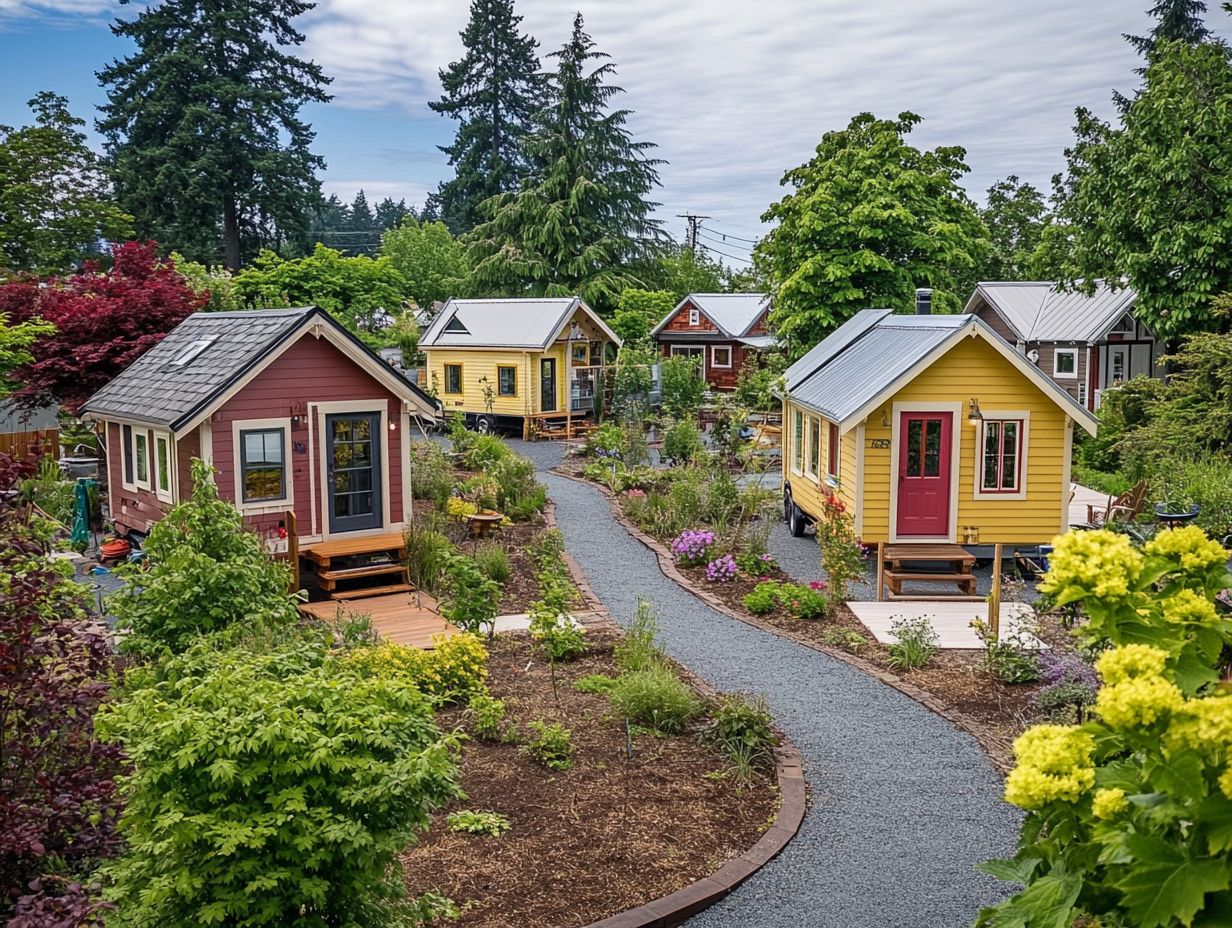
Residing in a tiny house community offers you a distinct experience that stands in stark contrast to traditional housing. Here, you ll encounter community rules, shared responsibilities, and vibrant interactions among residents, all of which come together to create a truly enriching lifestyle.
Community Rules and Dynamics
Community rules and dynamics play a pivotal role in cultivating a harmonious living environment within a tiny house community. They foster cooperation and mutual respect among residents.
These guidelines streamline shared maintenance tasks, like garden upkeep and communal space cleaning, while shaping social norms that promote open communication and trust. For instance, in one community, residents gather weekly to discuss concerns, share potluck meals, and celebrate milestones, creating a strong sense of camaraderie.
Such practices help navigate conflicts and build relationships. They allow everyone to feel more invested in one another’s well-being. When newcomers arrive, they often comment on how these established norms facilitate a smoother acclimation. This showcases that even in small spaces, the contributions of each individual can lead to a thriving community.
Tips for a Successful Experience
To ensure a successful experience in a tiny house community, embrace flexibility, adaptability, and open communication. These qualities are essential for dealing with the special way of living and its inherent challenges.
Living in such an intimate environment invites you to cultivate genuine relationships with your neighbors. These connections can significantly enhance your overall quality of life. Additionally, understanding the tiny house movement and legal challenges can help in establishing regular community gatherings—think potluck dinners or workshops—that encourage meaningful interactions and foster a sense of camaraderie among residents.
When conflicts arise whether over shared resources or differing lifestyles, it’s vital to approach discussions with empathy and a problem-solving mindset. By respecting each other’s boundaries and practicing active listening, you can maintain harmony and truly savor the benefits of your tiny house community. Additionally, being informed about tiny house laws can help you navigate any legal considerations effectively.
Frequently Asked Questions
What are the typical regulations for tiny house communities?
The regulations for tiny house communities vary depending on the location and local government. Most communities have regulations on size, design, and placement of tiny houses.
Do I need a permit to build a tiny house in a community?
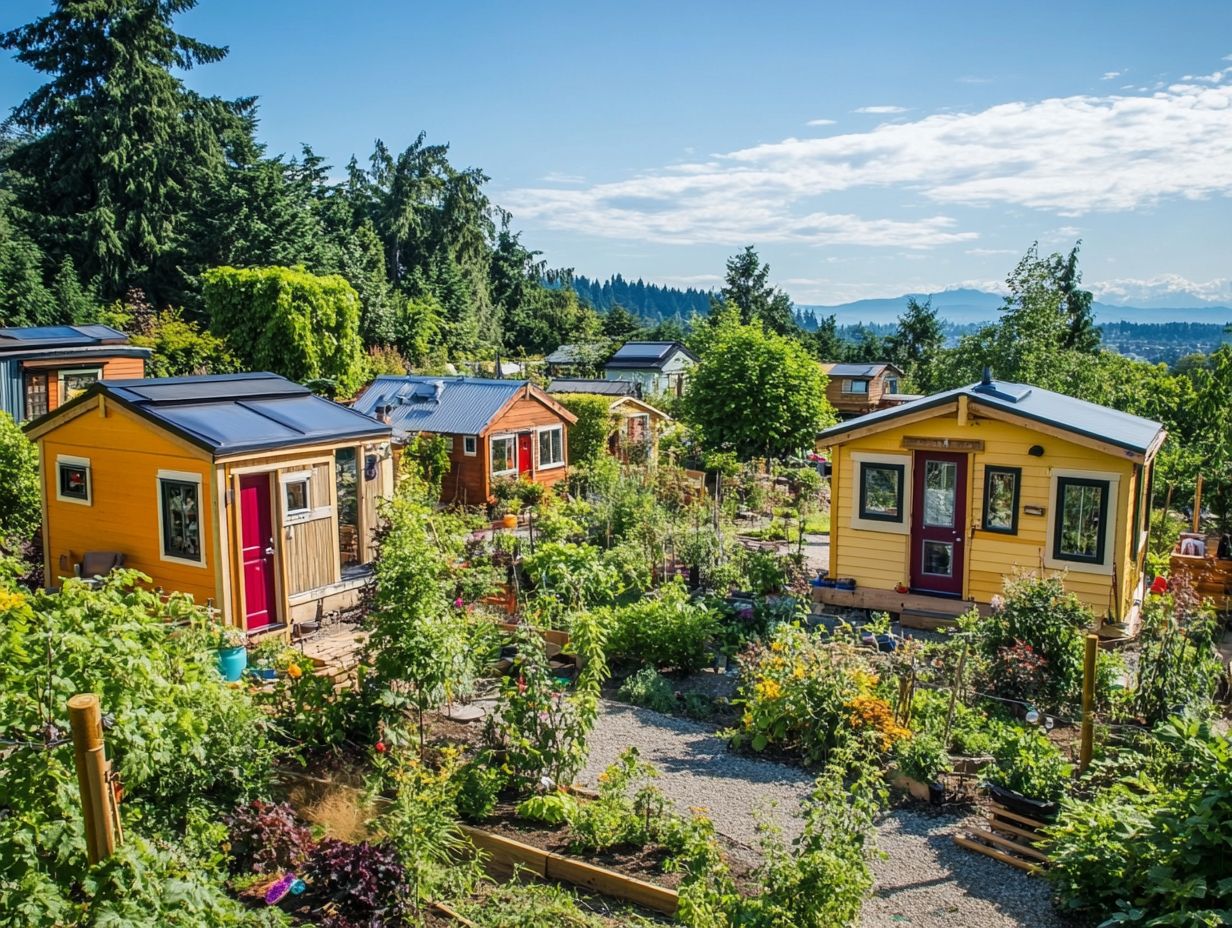
Yes, most communities require you to obtain a building permit before constructing a tiny house. Don t forget to research your local rules it s essential for smooth sailing!
Can I park my tiny house on any piece of land in a community?
No, tiny house communities typically have designated areas or lots for parking tiny houses. Some communities may also have zoning restrictions on where tiny houses can be parked.
Are there any restrictions on the materials I can use to build my tiny house?
Yes, many communities have regulations on the type of materials that can be used for construction. This ensures safety and durability of the structures.
Are there rules on the number of people living in a tiny house community?
Yes, most communities have occupancy regulations that limit the number of people living in a tiny house. This helps maintain a safe and livable environment for all residents.
What utility regulations apply to tiny houses?
Yes, tiny house communities may have regulations on utilities such as water, sewer, and electricity. Some communities may also have restrictions on the use of alternative energy sources.
Engaging in a tiny house community can be a rewarding experience, so take the time to learn about the rules, connect with your neighbors, and fully embrace this unique lifestyle!

